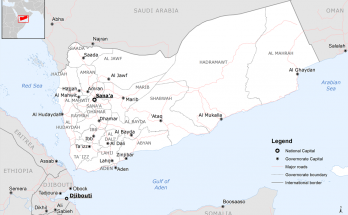By Nicole Auger, International Military Markets Analyst, Forecast International.
Shortly after the nuclear agreement between Iran and the P5+1 (the United States, the United Kingdom, China, Russia, and France – plus Germany) was announced, reports regarding the ongoing S-300 air defense system sale between Iran and Russia were put into question.
The S-300 is considered one of the most advanced multi-target anti-aircraft missile systems in the world. It is truck-mounted and can intercept 100 ballistic missiles and aircraft at once, according to Russian claims.
Much of the conjecture about the Iranian S-300 system has been contradictory, with both government and media statements often canceling each other out. The Iranian Defense Ministry claimed in December 2007 that a contract for delivery of Russian S-300s had already been signed in the past, adding that deliveries would be announced at a later date. Later that same month, the Iranian Foreign Ministry disputed this claim, stating that it had not held any talks with Russia over the purchase of the systems.
Russian authorities mentioned in September 2008 that talks about selling the S-300 to Iran were ongoing, while at the same time, other media reports mentioned that Croatia had sold S-300s to Iran. One source claimed Belarus had sold Tehran two of the reportedly four S-300 units in Iranian service. These S-300PT systems were formerly deployed near Minsk as part of the Belarusian air defense configuration, and were sold for around $140 million.
The debate has served Russia well, as it uses the potential delivery of the S-300 to Iran as a political bargaining chip with Israel and the U.S. What seems to have happened is that Russia verbally agreed to sell Iran a number of S-300 systems (five batteries for $800 million has been the most commonly reported arrangement), but stepped back due to internal debate over delivery of the systems to Tehran, in addition to critical reaction from the West and Israel. On September 22, 2010, then-Russian president Dimitri Medvedev signed a decree banning the supply of the S-300 system and other modern Russian armaments to Iran, thus bringing speculation on the issue to an end. The Russian decree was signed after U.N. Security Council Resolution 1929 was passed in June 2010, which strengthened existing United Nations sanctions on Iran.
Almost a year later, Tehran lodged a legal complaint with the International Court of Justice against Moscow regarding cancellation of the S-300 sale. Russia claims that U.N. Resolution 1929 made any such transfer of military hardware and technologies to Tehran illegal, and thus cited it as the reason for the cancellation. Chief executive officer of Russian Technologies Sergei Chemezov had stated earlier, in October 2010, that Russia would reimburse Iran for its down payments on the S-300 deal.
However, Moscow is hoping to reap economic and trade benefits now that a more comprehensive nuclear deal between Iran and world powers has been reached, allowing for an easing of sanctions on the Islamic republic. Due to this, Russia is modernizing its S-300 missile system for supply to Iran, an adviser to Russian President Vladimir Putin said on July 30.
Referring to the S-300 system, Vladimir Kozhin, a Russian presidential adviser on military matters, said, “It has partially been updated, separate elements are still being updated.” He added, “It will be that very S-300 complex that Iran wanted to receive.”
We will wait to see whether this announcement affects approval of the deal by the U.S. Congress. Congress was given 60 days to go over the terms of the July 14 deal, giving opponents plenty of time to challenge the Barack Obama administration with hearings in both the House and the Senate. However, if Congress fails to approve the deal, President Obama has 12 days in which to veto the decision, and has already said that he would take such action, if necessary.
For 50 years, Forecast International intelligence reports have been the aerospace and defense industry standard for accurate research, analysis, and projections. Our experienced analysts compile, evaluate, and present accurate data for decision makers. FI's market research reports offer concise analysis of individual programs and identify market opportunities. Each report includes a program overview, detailed statistics, recent developments and a competitive analysis, culminating in production forecasts spanning 10 or 15 years. Let our market intelligence reports be a key part of reducing uncertainties and mastering your specific market and its growth potential. Find out more at www.forecastinternational.com



